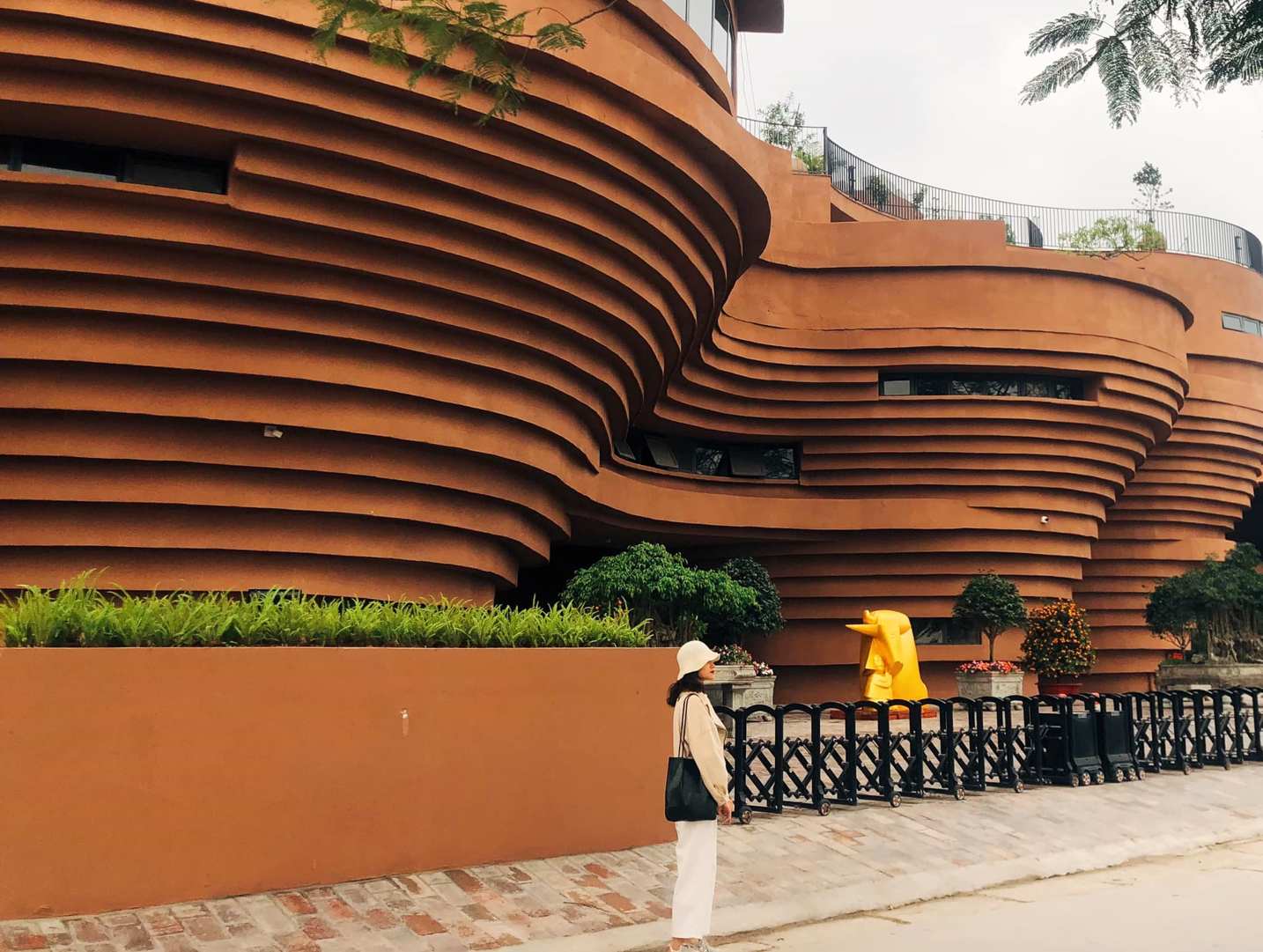News
Showcase the Timeless Craftsmanship of Bat Trang Ceramics
Bat Trang ceramics have long been celebrated as a pinnacle of Vietnamese artisanal heritage. Rooted deeply in history and infused with cultural significance, these ceramics embody centuries of traditional craft techniques blended with artistic innovation. The allure of Bat Trang ceramics lies not only in their aesthetic appeal but also in their representation of a community’s enduring dedication to quality and creativity. This article delves into the multifaceted world of Bat Trang ceramics, exploring their historical evolution, unique production processes, artistic designs, contemporary relevance, and global influence.
The Historical Evolution of Bat Trang Ceramics

Understanding Bat Trang ceramics requires a journey back through time to appreciate how this craft has persisted and transformed across centuries. This section examines the origins, growth, and sustained legacy of the Bat Trang pottery village, setting the foundation for why these ceramics continue to captivate collectors and connoisseurs worldwide.
The history of Bat Trang ceramics is a testament to resilience and adaptation. Born from natural resources abundant in the Red River Delta, the village flourished due to its strategic location and access to high-quality clay. Over time, the villagers honed their skills, responding to changing tastes and external influences, which helped Bat Trang emerge as a ceramic powerhouse of Vietnam.
Ancient Roots and Early Techniques
Bat Trang’s pottery beginnings date back over 700 years, originating during the Ly Dynasty when the village’s geographical advantages fostered a thriving ceramics industry. Utilizing locally sourced white clay, artisans developed techniques that emphasized both function and form. The early products were primarily utilitarian—storage jars, bowls, and tiles—but these objects also bore simple decorative motifs symbolic of Vietnamese culture.
The mastery of kiln technology was critical; Bat Trang potters pioneered efficient firing methods ensuring durability and consistent quality. This technical expertise allowed them to supply ceramics not just locally but also to imperial courts and regional markets. Such early achievements laid the groundwork for Bat Trang’s reputation as a distinguished ceramics center.
Influence of Dynasties and Trade Routes
As successive dynasties ruled Vietnam, Bat Trang ceramics evolved in style and purpose. During the Tran and Le Dynasties, for instance, there was an increased demand for elaborate designs featuring intricate patterns and vibrant glazes. This period saw the introduction of cobalt blue underglaze painting, reflecting influences from Chinese porcelain but adapted to local aesthetics.
Trade routes also played a pivotal role in shaping Bat Trang ceramics. The Silk Road and maritime exchanges introduced new stylistic trends and materials, which Vietnamese potters integrated creatively. This interaction enriched Bat Trang’s craftsmanship, allowing it to thrive amid competition and maintain cultural authenticity.
Preservation Through Modern Times
Despite wars and industrialization, Bat Trang ceramics survived by balancing tradition with innovation. In the 20th century, many artisans began experimenting with new glazing techniques and forms to meet modern market demands while preserving classic methods like hand-thrown pottery and wood-fired kilns.
Government initiatives and cultural preservation programs further bolstered Bat Trang’s legacy by promoting tourism and artisan workshops. Today, the village remains a living museum where generations of potters continue to practice time-honored skills, ensuring the continuity of Bat Trang’s ceramic artistry.
The Unique Production Process of Bat Trang Ceramics

The making of Bat Trang ceramics is a meticulous process combining nature, skill, and patience. This section explores each step involved—from raw material sourcing to firing—highlighting the craftsmanship that distinguishes Bat Trang pieces from mass-produced ceramics.
Traditional pottery production at Bat Trang emphasizes harmony between human labor and natural elements. Each phase embodies careful attention to detail, reflecting artisan pride and a respect for heritage. Understanding these stages provides deeper appreciation for the physical and creative efforts invested in every Bat Trang ceramic item.
Sourcing and Preparing Clay
At the heart of Bat Trang ceramics lies the village’s distinctive white clay, which contributes to the final product’s texture and color. Potters carefully select clay from nearby riverbeds, ensuring it is free of impurities. This raw material is then cleaned, kneaded, and mixed with water to achieve ideal plasticity for shaping.
This preparation is more than a mechanical task; it requires experiential knowledge to balance moisture content and consistency. Clay that is too wet or dry can lead to defects during firing, underscoring the importance of this foundational step in producing strong, aesthetically pleasing ceramics.
Handcrafting and Shaping Techniques
Bat Trang artisans employ various hand-shaping methods, ranging from wheel throwing to coiling and slab construction. Wheel throwing remains dominant, allowing potters to form symmetrical vessels with precision. Skilled hands manipulate the spinning clay, creating shapes that vary from functional household items to decorative art forms.
This stage is crucial for infusing character into each piece. Artisans often add subtle variations or textures, demonstrating their individual style within traditional frameworks. The tactile connection between potter and clay fosters a unique relationship that machines cannot replicate.
Decoration and Glazing
Decoration on Bat Trang ceramics reflects the village’s rich artistic heritage. Before firing, potters apply designs using underglaze painting, carving, or slip trailing. Common motifs include lotus flowers, dragons, and geometric patterns, symbolizing luck, prosperity, and spiritual beliefs.
Glazing involves coating the ceramic surface with a glassy layer that enhances durability and visual appeal. Bat Trang’s glazes range from transparent to vivid blues and greens achieved through mineral-based ingredients. Firing at controlled temperatures vitrifies the glaze, resulting in glossy, smooth finishes characteristic of Bat Trang wares.
Firing: The Final Transformation
Firing represents the culmination of the pottery-making process. Traditional wood-firing kilns are still used alongside modern gas-fired ones, each imparting distinct qualities to the ceramics. Wood firing creates natural ash deposits and varied coloration, lending an organic, rustic charm.
Potters carefully monitor temperature changes and duration to prevent cracking or warping. This demanding step requires technical expertise and intuition, as the success of the entire batch depends on precise conditions. The firing process transforms malleable clay into sturdy, beautiful artifacts ready for use or display.
Artistic Designs and Symbolism in Bat Trang Ceramics

Bat Trang ceramics serve as a canvas for artistic expression steeped in symbolism and cultural narratives. This section investigates the visual language and motifs prevalent in Bat Trang works, revealing the deeper meanings woven into their decorative schemes.
The aesthetics of Bat Trang ceramics go beyond mere decoration; they communicate values, beliefs, and identity. Appreciating these artistic choices enriches our understanding of Vietnamese culture and the ways artisans embed tradition within their craft.
Traditional Motifs and Their Meanings
Common motifs found on Bat Trang ceramics include imagery such as lotus blossoms, phoenixes, dragons, and bamboo stalks. Each carries profound meaning rooted in Vietnamese folklore, religion, and philosophy. For example, the lotus symbolizes purity and enlightenment, while dragons represent power and protection.
Artisans incorporate these symbols thoughtfully to convey auspicious messages or honor spiritual ideals. The repetition and stylization of motifs also evoke continuity and stability, connecting past generations with the present.
Color Palette and Aesthetic Principles
The color choices in Bat Trang ceramics reflect both natural influences and cultural preferences. Blues and whites dominate due to cobalt underglaze traditions, but earth tones like green, brown, and cream also feature prominently. These hues harmonize with the clay’s natural shades, creating balanced compositions.
Aesthetic principles such as simplicity, symmetry, and rhythmic patterns guide decorative arrangements. This restrained elegance aligns with East Asian artistic sensibilities, favoring understated beauty that invites contemplation rather than ostentation.
Fusion of Old and New Artistic Trends
While Bat Trang pottery remains rooted in tradition, contemporary artists experiment with hybrid styles incorporating modern motifs and abstract forms. This adaptability showcases the dynamic nature of Bat Trang ceramics as a living art form responsive to evolving cultural dialogues.
Innovations include blending Western techniques with Vietnamese iconography or utilizing new glazing technologies to produce novel textures and finishes. Such creative synthesis ensures Bat Trang ceramics remain relevant and appealing to diverse audiences without losing their identity.
Contemporary Relevance and Global Impact of Bat Trang Ceramics
In today’s globalized world, Bat Trang ceramics have transcended local boundaries to become coveted art pieces internationally. This section explores how the village’s ceramics industry has adapted to modern markets, contributing to economic development and cultural diplomacy.
The sustained popularity of Bat Trang ceramics demonstrates the power of traditional crafts to thrive amidst modernization. Their ability to connect people globally through shared appreciation of fine craftsmanship underscores their ongoing significance.
Economic Significance and Community Development
The ceramics industry constitutes a vital economic pillar for Bat Trang village. It provides employment opportunities and supports ancillary businesses such as tourism, retail, and education. Workshops and showrooms attract visitors eager to learn about pottery, boosting local income and preserving cultural heritage.
Government support through training programs and export promotion helps artisans compete on international platforms. By maintaining high standards and innovating product lines, Bat Trang ceramic producers capitalize on growing demand for authentic handmade goods.
Cultural Exchange and International Recognition
Bat Trang ceramics frequently feature in world exhibitions, museums, and art fairs, enhancing Vietnam’s cultural visibility abroad. They serve as tangible ambassadors of Vietnamese tradition, fostering cross-cultural understanding and appreciation.
Collaborations with foreign designers and participation in global competitions have elevated Bat Trang’s profile. Collectors and institutions value these ceramics for their historical significance and artistic merit, solidifying their status in the global art market.
Challenges and Future Prospects
Despite successes, Bat Trang ceramics face challenges including competition from mass-produced imports and shifting consumer preferences. Maintaining craftsmanship standards while scaling production requires balancing commercialization with authenticity.
Emerging technologies and digital marketing offer new avenues for growth, enabling artisans to reach wider audiences and streamline operations. Investing in youth education and sustainable practices will ensure that Bat Trang ceramics continue to flourish and evolve responsibly.
Techniques of Bat Trang Ceramics Artists: Mastery and Innovation
The creation of Bat Trang ceramics embodies a symbiosis of inherited techniques and innovative approaches. This section delves into the skills, tools, and creative processes that define the artisans’ mastery and contribute to the uniqueness of Bat Trang pottery.
Examining the craftsmen’s techniques reveals the depth of human ingenuity and cultural continuity embodied in each handcrafted piece. Understanding these methods highlights the delicate balance between tradition and creative expression.
Traditional Tools and Their Applications
Artisans rely on specialized tools such as potter’s wheels, carving knives, brushes, and molds tailored for different ceramic forms and decorations. These instruments enable precise manipulation of clay and detailed embellishments.
Each tool requires skilled handling; for example, the potter’s wheel demands steady control to shape symmetrical vessels, while carving tools reveal fine line work. The tactile feedback received during use informs the artist’s adjustments, fostering an intimate dialogue between maker and medium.
Experimental Techniques and Material Innovations
While anchored in tradition, some Bat Trang potters explore experimental methods like mixing unconventional minerals into glazes or applying multi-layered textures. These experiments introduce novel aesthetics and tactile sensations, pushing the boundaries of ceramic art.
Material innovations may involve sourcing alternative clays or integrating recycled components, aligning with contemporary sustainability concerns. Such experimentation keeps the craft vibrant and responsive to environmental and market trends.
Artistic Vision and Personal Style
Individual artisans infuse their personal vision into Bat Trang ceramics, often developing signature styles within communal frameworks. This artistic autonomy allows for diversity in shape, decoration, and thematic content, enriching the overall output of the village.
Personal storytelling and emotional expression manifest through design choices, color usage, and finishing touches. This human element elevates each ceramic piece from mere object to artwork resonant with meaning and personality.
Bat Trang Ceramics in Modern Interior Design and Collecting
The timeless beauty and cultural resonance of Bat Trang ceramics have made them highly sought after in contemporary interior design and collecting circles. This section explores how these ceramics integrate into modern lifestyles and the motivations behind their acquisition.
Bat Trang ceramics offer both functional utility and artistic enrichment, bridging traditional craft with modern aesthetics. Their presence in homes and galleries speaks to an enduring appreciation for handcrafted elegance and cultural connection.
Integration into Modern Home Decor
Designers incorporate Bat Trang ceramics as statement pieces, combining traditional motifs with minimalist spaces to create visual contrast and warmth. Items like vases, bowls, and tea sets serve practical purposes while elevating décor with artisanal charm.
The versatility of Bat Trang ceramics enables them to complement various interior styles—whether rustic, contemporary, or eclectic—making them popular choices for adding texture and cultural depth to environments.
Collecting for Cultural and Artistic Value
Collectors prize Bat Trang ceramics for their historical significance, craftsmanship, and aesthetic appeal. Acquiring these pieces represents an investment in cultural preservation and appreciation of fine art.
Collectors often seek rare or vintage items showcasing unique glazes, forms, or artist signatures. Exhibiting such collections publicly or privately fosters greater awareness of Vietnamese ceramics heritage.
Market Trends and Authentication
Growing demand for authentic Bat Trang ceramics has led to increased focus on provenance and quality verification. Expert appraisals and certification services help buyers navigate the market, ensuring genuine craftsmanship.
Market trends reveal a rising interest in limited editions and custom commissions, reflecting desire for exclusivity and personalized artistry. This trend benefits artisans by encouraging creative risk-taking and sustaining traditional skills.
Conclusion
Bat Trang ceramics stand as a remarkable embodiment of Vietnam’s cultural heritage, reflecting centuries of skilled craftsmanship, artistic creativity, and resilient tradition. From their ancient origins to their enduring presence in contemporary art and design, these ceramics illustrate the dynamic interplay between history and modernity. The meticulous production processes, rich symbolic designs, and adaptability to global markets underscore Bat Trang’s relevance and vitality. As both functional objects and artistic treasures, Bat Trang ceramics continue to enchant connoisseurs and communities alike, affirming the timeless allure of handcrafted excellence. The legacy of Bat Trang ceramics is not merely preserved but continually reborn through the dedication of artisans who honor the past while embracing the future.
